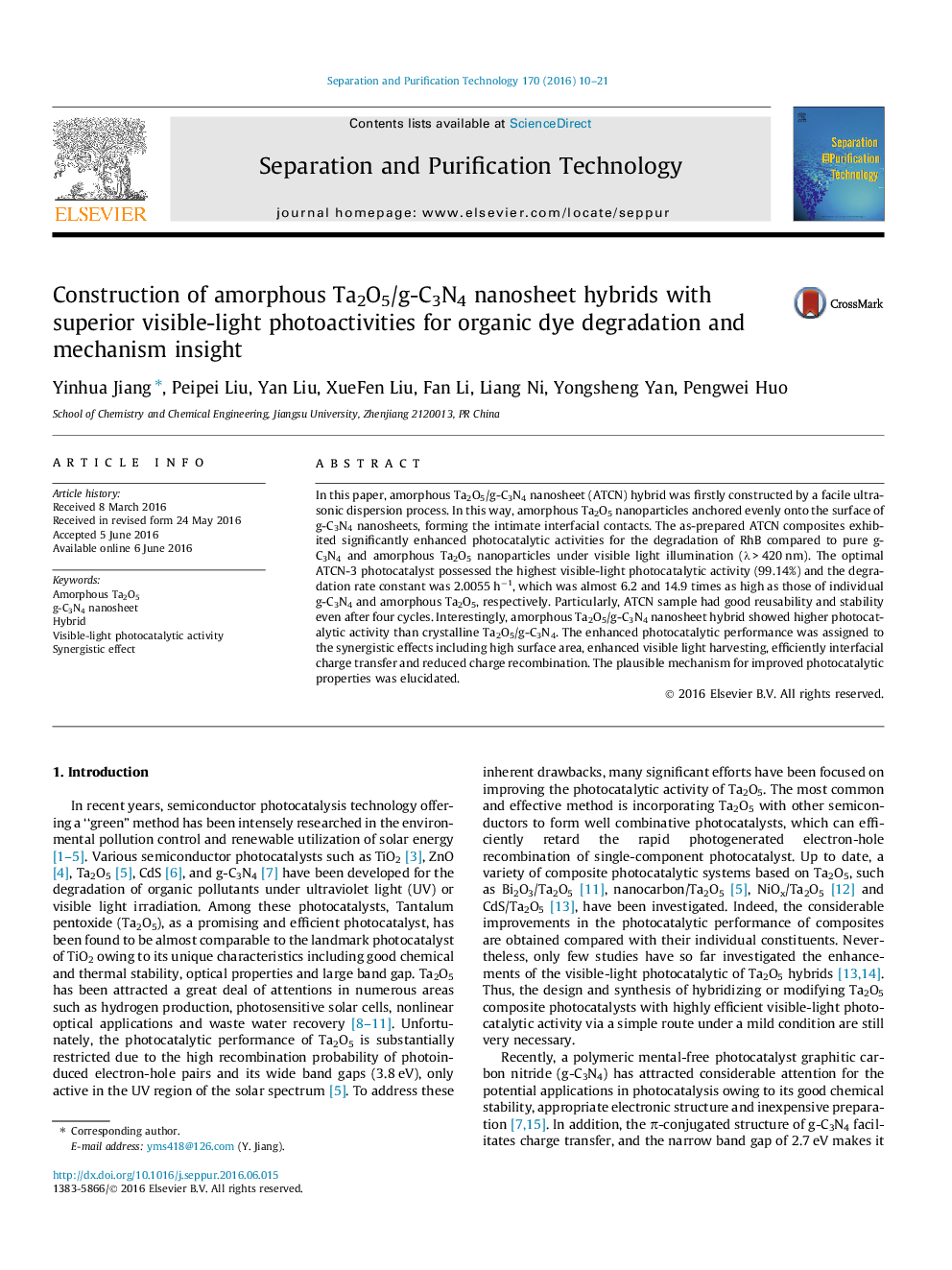| Article ID | Journal | Published Year | Pages | File Type |
|---|---|---|---|---|
| 639799 | Separation and Purification Technology | 2016 | 12 Pages |
•Novel visible-light-responsive ATCN hybrids were successfully constructed.•The synergistic effect in hybrids endows them much enhanced photocatalytic property.•The ATCN hybrids exhibit good reusability and stability.•The ATCN hybrid shows higher photocatalytic activity than crystalline Ta2O5/g-C3N4.
In this paper, amorphous Ta2O5/g-C3N4 nanosheet (ATCN) hybrid was firstly constructed by a facile ultrasonic dispersion process. In this way, amorphous Ta2O5 nanoparticles anchored evenly onto the surface of g-C3N4 nanosheets, forming the intimate interfacial contacts. The as-prepared ATCN composites exhibited significantly enhanced photocatalytic activities for the degradation of RhB compared to pure g-C3N4 and amorphous Ta2O5 nanoparticles under visible light illumination (λ > 420 nm). The optimal ATCN-3 photocatalyst possessed the highest visible-light photocatalytic activity (99.14%) and the degradation rate constant was 2.0055 h−1, which was almost 6.2 and 14.9 times as high as those of individual g-C3N4 and amorphous Ta2O5, respectively. Particularly, ATCN sample had good reusability and stability even after four cycles. Interestingly, amorphous Ta2O5/g-C3N4 nanosheet hybrid showed higher photocatalytic activity than crystalline Ta2O5/g-C3N4. The enhanced photocatalytic performance was assigned to the synergistic effects including high surface area, enhanced visible light harvesting, efficiently interfacial charge transfer and reduced charge recombination. The plausible mechanism for improved photocatalytic properties was elucidated.
Graphical abstractFigure optionsDownload full-size imageDownload as PowerPoint slide
